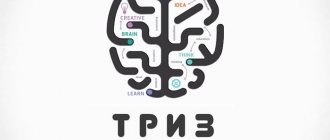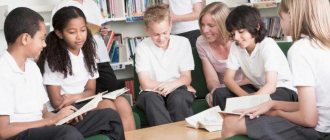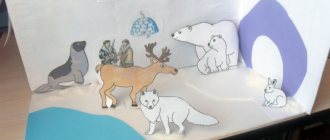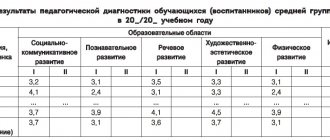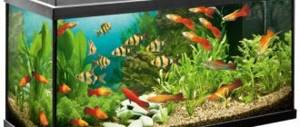Environmental education of preschool children through the implementation of project activities
Environmental education of preschool children through the implementation of project activities
Currently, the problem of the state of the environment is extremely relevant and is attracting more and more attention. Environmental education is a necessary condition for overcoming the negative consequences of human activity on the environment, and is also a factor in the formation of environmental culture. It is at the stage of preschool childhood that children receive basic knowledge and emotional impressions about nature, they form the foundations of environmental consciousness and the initial elements of ecological culture. Preschool teachers use various forms of work with children to develop an environmental culture: conversations, observations, environmental games, familiarization with works of fiction, etc. All of the above forms of work can be successfully combined using the project method, which today is the most successful for education ecological culture of preschool children.
The pedagogical significance of the project method lies in the fact that this method is a method of purposeful, practical action, which opens up the possibility of forming a child’s own life experience.
It comes from children's needs and interests and goes well with the principle of eventfulness, which involves immersing the child in a certain topic or problem. To implement the project in preschool education, educators work closely with parents and specialists. The implementation of the project is a joint activity in which parents are not passive observers, but active participants in the educational process. The interaction of all project participants presupposes a respectful attitude towards each other, and the better the partners know and understand each other, the more opportunities they have to form positive personal and business relationships, in order to come to an agreement, agree on joint actions, taking into account their individual opportunities and abilities.
The transition to project activities for our team was interesting and difficult. We encountered some problems, but found ways to solve them. The results of our work showed that preschoolers can successfully carry out project activities, while clear positive changes are observed in the cognitive development of children, personal growth of preschoolers is observed, which is expressed in the desire to perform original creative work. The relationship between children and parents is changing. Children become interesting to parents as partners in joint activities.
The project method in working with preschoolers today is an innovative and promising method that should take its rightful place in the preschool education system. Therefore, our teaching staff presents their accumulated material on the environmental project “The Earth is Our Common Home” with preschool children.
At a level accessible to preschoolers, the idea of unity and interconnection of living and nonliving things is revealed, the understanding of which forms the basis of the individual’s ecological culture. Understanding this connection ensures that the child develops elementary ideas about the causality and mutual dependence of phenomena in nature, and creates the basis for his environmentally appropriate behavior.
The project presents the following types of cognitive activities: observation, environmental modeling, search activities, work in nature. The project also includes artistic and creative activities.
Project name:
"The earth is our common home."
Project type:
long-term, research, creative.
Project participants:
preschool children, parents, educators.
Direction:
cognitive and speech development; social - personal development; artistic and aesthetic development; communication.
Relevance of the problem.
“Love for the Motherland begins with love for nature.” It is under this slogan that all activities are carried out in kindergarten, which are aimed at ensuring that our children learn to love their Motherland through love for the world around them. It is possible to lay love for the Motherland, for the native land, for the native nature, for people only in preschool age; in the future, it is extremely difficult to change the worldview, to change the ideas and views of a person. A consciously correct attitude of children towards nature is built on its sensory perception, emotional attitude towards it, on knowledge of the characteristics of life, growth and development of individual living beings. Modern children rarely communicate with nature, so environmental education begins with getting to know the objects of the immediate environment that the child encounters every day. It is important to promptly develop the ecological consciousness of a small personality. By getting involved in real activities of caring for plants and observing animals, the child becomes responsive and develops humane feelings.
Objective of the project:
Formation in children of elements of ecological culture, environmentally literate behavior in nature, a humane attitude towards the world around them, towards themselves as an inhabitant of planet Earth.
Project objectives:
1. Teach children to observe objects of living and inanimate nature, draw conclusions, establishing cause-and-effect relationships between objects of nature.
2. Expand children’s ideas about the nature of their native land, the relationships in it and ways to preserve it.
3. Cultivate a sense of empathy and desire to help natural objects in need: plants, insects, animals, fish, birds, humans.
4.Develop mutual understanding and mutual assistance between children, teachers, parents, the need for constant self-development of environmental culture.
Expected results:
1. Children will show a pronounced interest in objects and natural phenomena.
2. The children know how to observe objects of living and inanimate nature, explain connections and chains in nature, and carry out the Laws of the common house of nature:
— All living organisms have an equal right to life. — In nature, everything is interconnected.
— In nature, nothing disappears anywhere, but passes from one state to another.
3. Children distinguish between living nature (plants, mushrooms, animals, humans) and inanimate nature (air, soil, water, sun).
4. Children confidently distinguish and name the characteristic signs of the seasons. Explain the reasons for the change of seasons.
5. Children have developed the skills to care for plants and animals in a corner of nature.
6. Children have the skills of environmentally friendly behavior in nature and know prohibiting and permissive environmental signs.
7. Parents will be involved in the environmental project. Environmental education of parents will be a big plus in the environmental education of children in the group.
Project activity, in our opinion, is one of the most successful forms for the development of a child’s individuality. It is in project activities that the child participates as a subject of his own education, and, what is important for the kindergarten, parents are included in the educational process as direct customers and participants in the education of their own children.
During the implementation of the project, the children were involved in various activities. In direct educational activities, children learned to distinguish between living nature (plants, mushrooms, animals, humans) and inanimate nature (air, soil, water, sun). They confidently distinguish and name the characteristic signs of the seasons, explain the reasons for the change of seasons, and are happy to express themselves in visual and productive activities. Together with teachers, children cared for plants in a corner of nature, observed objects of living and inanimate nature, learned about the relationships in nature and ways to preserve it. Visiting the museum, participating in exhibitions, walking in the park, all this contributed to the development of children’s interest in objects and natural phenomena, as well as mutual understanding between children, teachers, and parents.
For the purposeful education of the ecological culture of pupils, the formation in them of a system of environmental and local history knowledge and skills, group projects were implemented within the framework of the project “The Earth is Our Common Home”:
“These amazing stones” in the preparatory group.
Goal: expanding children's knowledge about stones; creating conditions for the development of cognitive and research abilities of students.
“The amazing properties of water” in the preparatory group.
Goal: expanding and deepening children’s understanding of water, its properties, and states. Fostering respect for water as the source of life for humans and all life on Earth
“Wintering birds” in the senior group.
Goal: expanding and enriching knowledge about wintering birds; develop interest and love for the native land, the ability to reflect this in drawing, modeling, appliqué, and manual labor.
"Golden Autumn"
Target:
Expand and systematize children’s knowledge about autumn as a time of year, its signs and phenomena
“An exciting journey into the world of insects” in the senior group.
Goal: to form children’s ideas about the diversity of insects, their connection with their habitat, and to form a consciously correct attitude towards insect representatives.
“Vegetable garden on the windowsill” in the middle group.
Target:
"Children of the Earth" in the preparatory group..
Goal: to develop artistic representation by perceiving the beauty of living nature; cultivate a caring attitude towards nature; promote the development of aesthetic taste in children using the example of works of art; develop creative activity.
The project method had a positive impact on the formation of the ecological culture of preschool children, the education of a value attitude towards nature, contributed to the development of cognitive and research skills, and influenced the development of creative abilities and logical thinking. Project activities helped children understand the multifaceted significance of nature. Project participants received not only new knowledge, which became the property of their personal experience, but also acquired the skills of a caring, creative attitude towards the world around them.

